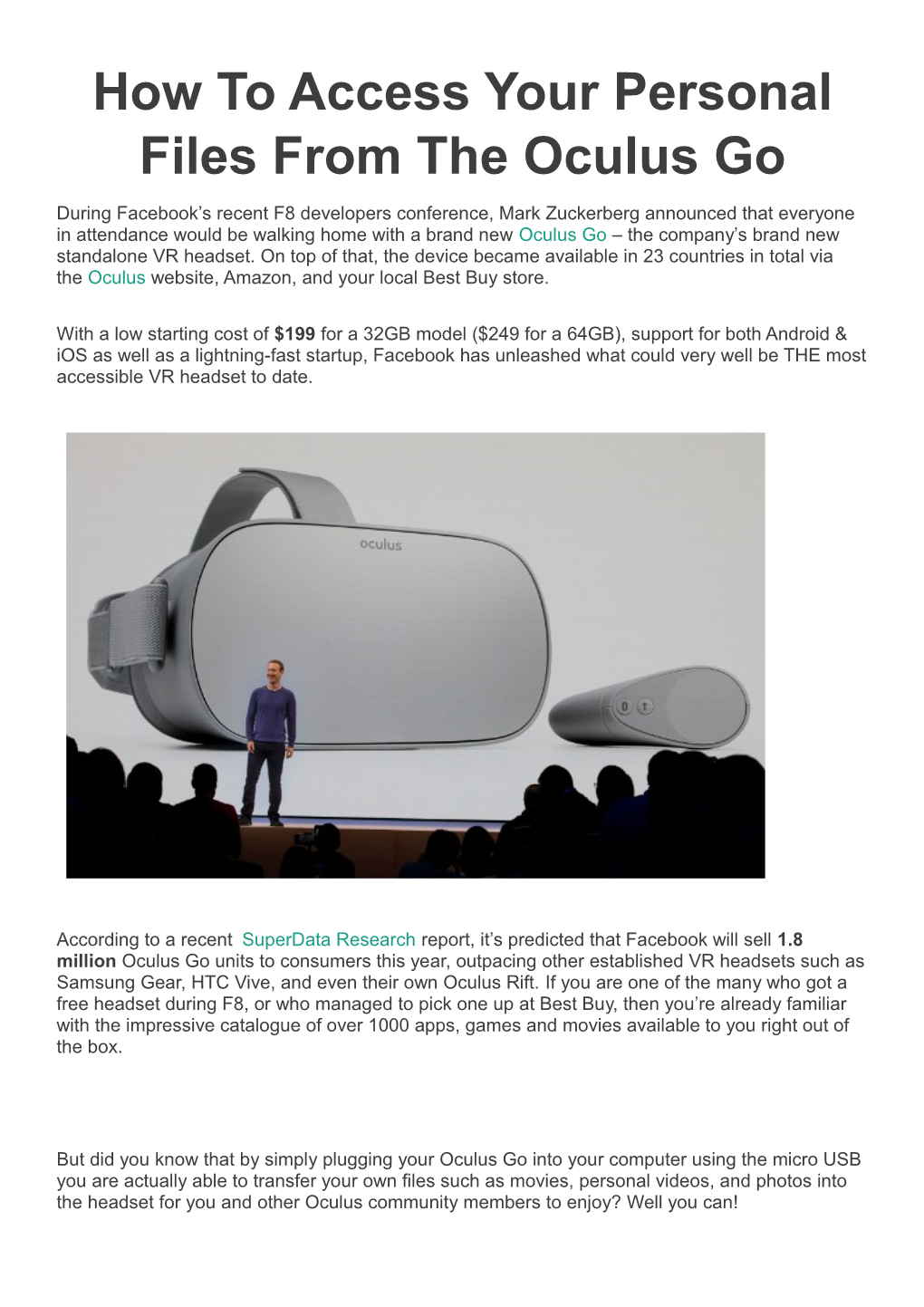How To Access Your Personal Files From The Oculus Go
During Facebook’s recent F8 developers conference, Mark Zuckerberg announced that everyone in attendance would be walking home with a brand new Oculus Go – the company’s brand new standalone VR headset. On top of that, the device became available in 23 countries in total via the Oculus website, Amazon, and your local Best Buy store.
With a low starting cost of $199 for a 32GB model ($249 for a 64GB), support for both Android & iOS as well as a lightning-fast startup, Facebook has unleashed what could very well be THE most accessible VR headset to date.
According to a recent SuperData Research report, it’s predicted that Facebook will sell 1.8 million Oculus Go units to consumers this year, outpacing other established VR headsets such as Samsung Gear, HTC Vive, and even their own Oculus Rift. If you are one of the many who got a free headset during F8, or who managed to pick one up at Best Buy, then you’re already familiar with the impressive catalogue of over 1000 apps, games and movies available to you right out of the box.
But did you know that by simply plugging your Oculus Go into your computer using the micro USB you are actually able to transfer your own files such as movies, personal videos, and photos into the headset for you and other Oculus community members to enjoy? Well you can!
The process of accessing your files via your Oculus Go headset vary depending on which platform you’re operating, but ultimately the steps are very easy:
Mac
The first thing you’ll need to do is download the Android File Transfer tool and install that onto your Mac computer. Once installed, you will then plug-in your Oculus Go into the computer, open up the file transfer tool and then – through your headset – give your computer permission to access the data by choosing “allow access to data.” Once you’ve done that, a window called “VR-Headset” will open up showing you the Go’s internal folders.
Windows
The process for windows is much easier. Just connect your Oculus Go to your PC and then through your headset, give your computer permission to access the data. Once connected, you will then open the Windows file explorer and choose “VR- Headset.”
Chrome OS
Like Windows, you will simply connect your Oculus Go to your Chromebook. From there, you will give your computer access by choosing “allow access to data.” Once that’s all set, the Go’s file system should come up on your computer screen.
One odd detail however is the inability to view how much actual GB space you are using (at least, not yet), until you’re down to 2 GB’s left – at which the headset will then prompt you with a warning followed by yet another warning at 500 MB’s. Connecting your Oculus Go to your computer will allow you to view and manage the storage space on your headset. You can then pull media files out of the headset and onto your desktop to clean things up and help better identify exactly how much space you have left.
The potential of this side-transfer option opens up a plethora of possibilities for the Oculus Go. With the right configuration the device could theoretically be used within a work environment or in the field of innovation.
With the arrival of Oculus Go comes the affordable, standalone VR we’ve been waiting for.
